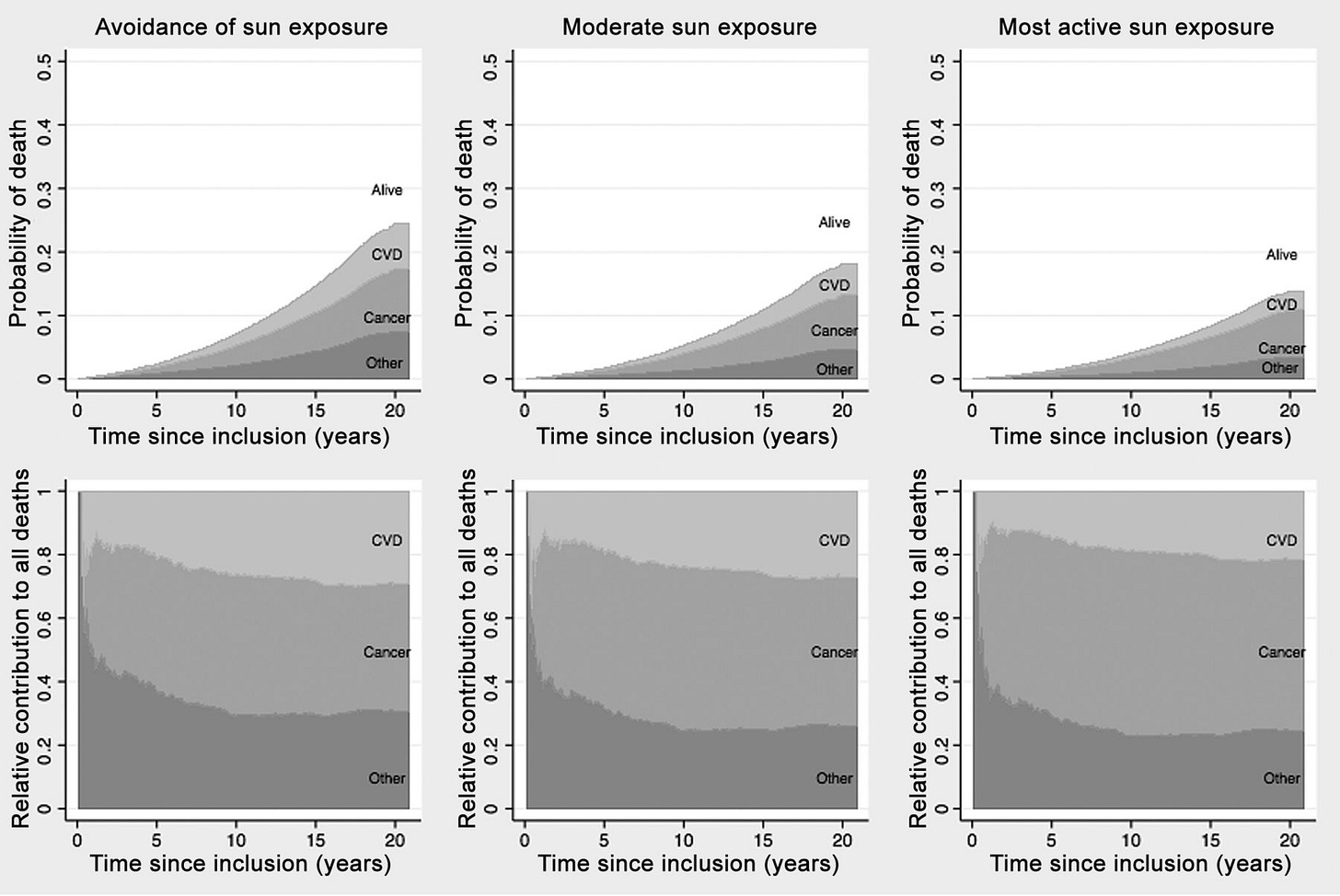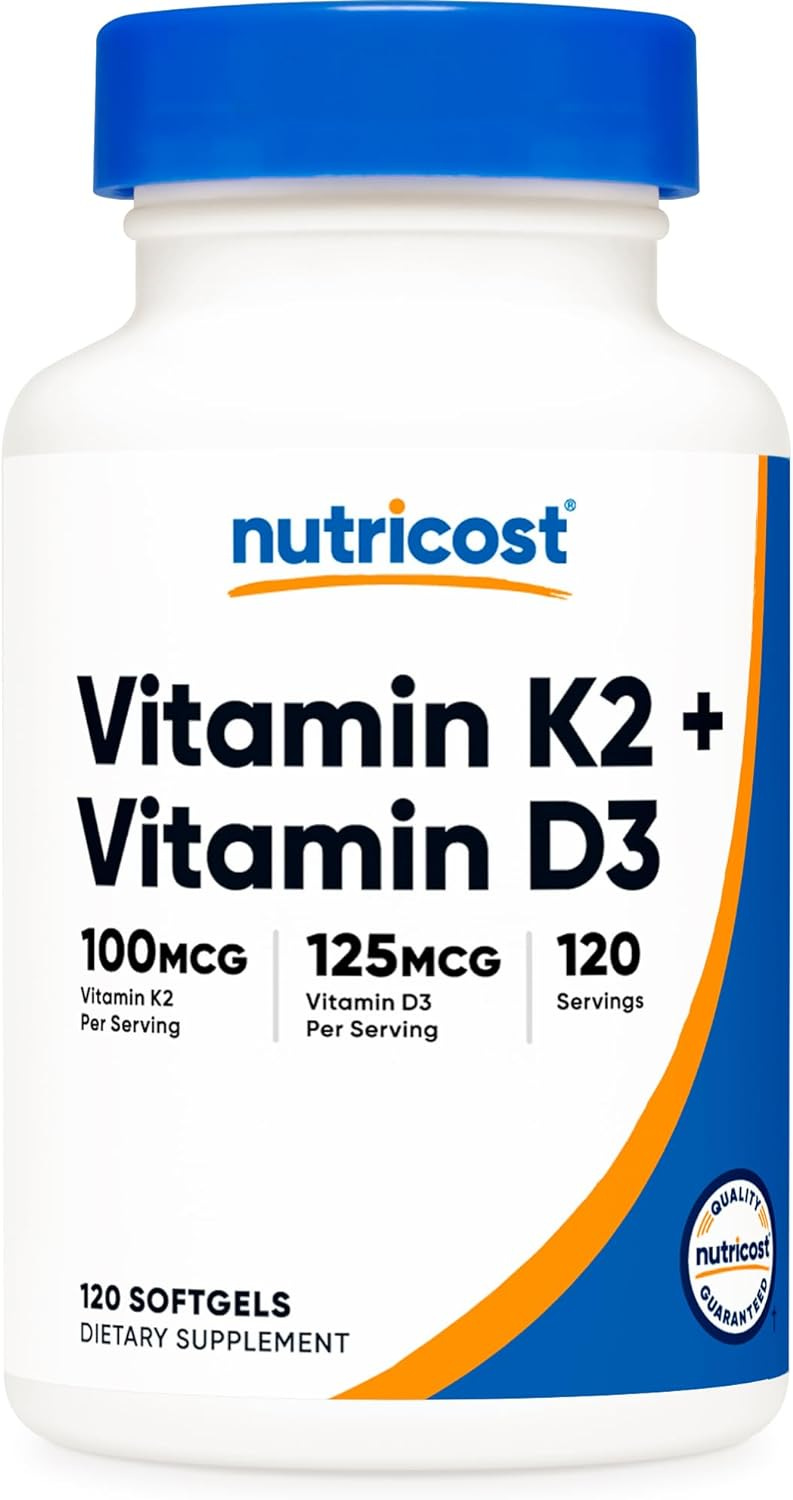While “sun exposure” isn’t technically “food” or nutrition related, Vitamin D is and the sun is our number one source of Vitamin D. Sun exposure is also correlated to many health outcomes; meanwhile the effectiveness of sunscreens is becoming more questionable.

The sun… one of the great alleged evils of the modern (Post-WWII) “healthcare” system; and one of the top three things government “authorities” (insert 3-letter-agency of choice) recommend avoiding. That’s interesting, because “sunburn, high intermittent sun exposure, skin awareness histories, and solar elastosis were statistically inversely associated with death from melanoma (1).”
Almost 10 years ago, a 2016 publication (2) concluded that “The message of sun avoidance must be changed to acceptance of non-burning sun exposure sufficient to achieve serum 25(OH)D concentration of 30 ng/mL or higher in the sunny season and the general benefits of UV exposure beyond those of vitamin D.”
In that same year a study of almost 30,000 women in Sweeden (3) found that “Nonsmokers who avoided sun exposure had a life expectancy similar to smokers in the highest sun exposure group…” This effectively means that inadequate sun exposure is as much of a risk factor for CVD and all-cause-mortality as smoking.
The authors concluded that “the longer life expectancy amongst women with active sun exposure habits was related to a decrease in (cardiovascular disease) and noncancer/non-CVD mortality, causing the relative contribution of death due to cancer to increase.” What that means is that people still die from something, so if you decrease deaths from one thing (CVD in this case), then the percentage of deaths from another thing (cancer) goes up relatively (percentage of total deaths), even though the absolute value (number of population who died by X) did not change.
This concept is further explained by the graphics (below) published in a 2018 review (4).
Clearly there is some risk to (excessive) sun exposure. However, that is not the messaging made by the powers-that-be. The point I am making here is that sun exposure is a net benefit and that the risks of over-exposure are drastically outweighed by the risks of under-exposure.
“Studies in the past decade indicate that insufficient sun exposure may be responsible for 340,000 deaths in the United States and 480,000 deaths in Europe per year, and an increased incidence of breast cancer, colorectal cancer, hypertension, cardiovascular disease, metabolic syndrome, multiple sclerosis, Alzheimer's disease, autism, asthma, type 1 diabetes and myopia (5).”
1 billion people worldwide have Vitamin D deficiency, while 50% of the world’s population has Vitamin D insufficiency (6). Reference ranges typically note “mild deficiency” at 20 ng/mL and recommend daily sun exposure / supplementation of 600 - 800 IU / day. However, as I’ve noted many times before, something in the range of 10,000 IU / day or 80 ng/mL may be more optimal for immune and reproductive health. “Sufficiency” is sometimes referenced as blood levels of 50 ng/mL (7).
As a reminder, Vitamin D is synthesized from cholesterol when your skin comes in contact with UVB radiation from the sun. That’s why your regional “Vitamin D Window” is only at certain times of the day for certain months of the year; and sometimes not at all depending on your geographic latitude (distance North or South from the Equator).
Even during summer months, at a central latitude, many people work indoor jobs, and it still rains sometimes. In my opinion, a baseline supplementation of 5,000 IU / day isn’t a bad idea. In the winter season I bump this up to 10,000 IU / day which is my year-round goal (5,000 IU from supplements and 5,000 IU, minimum, from the sun, daily).
While there are certain benefits you get from sun exposure that you don’t get from Vitamin D, “habit stacking” is a useful way to benefit the time you do spend / are able to get in the sun.
For example, if your’e time limited, let’s say a 30-minute lunch break. Taking that break when the sun is at it’s peak (solar noon, typically between 12:00 pm and 2:00 pm). Then, let’s make sure we’re barefoot (grounding) and maximizing skin exposure (to the extent that it’s acceptable at your workplace).
If we’re eating a animal-protein rich meal and maybe doing some mobility work or going for a walk after that meal — again, barefoot in the grass with our skin exposed to the sun, we’re getting a lot of value out of a relatively short window of time.
Disclaimer: I do receive a small sales commission for purchases made through links on this site.





